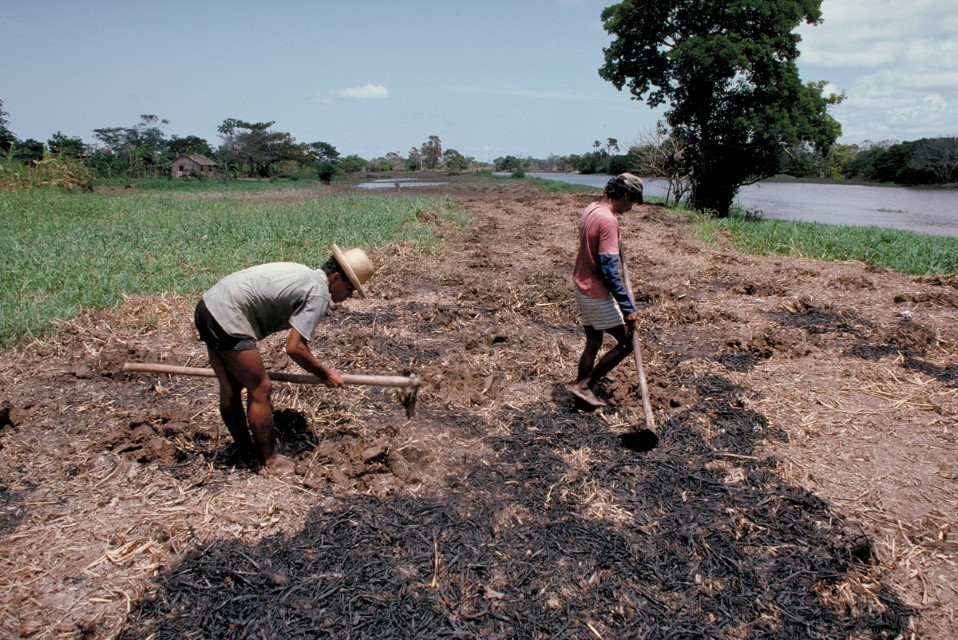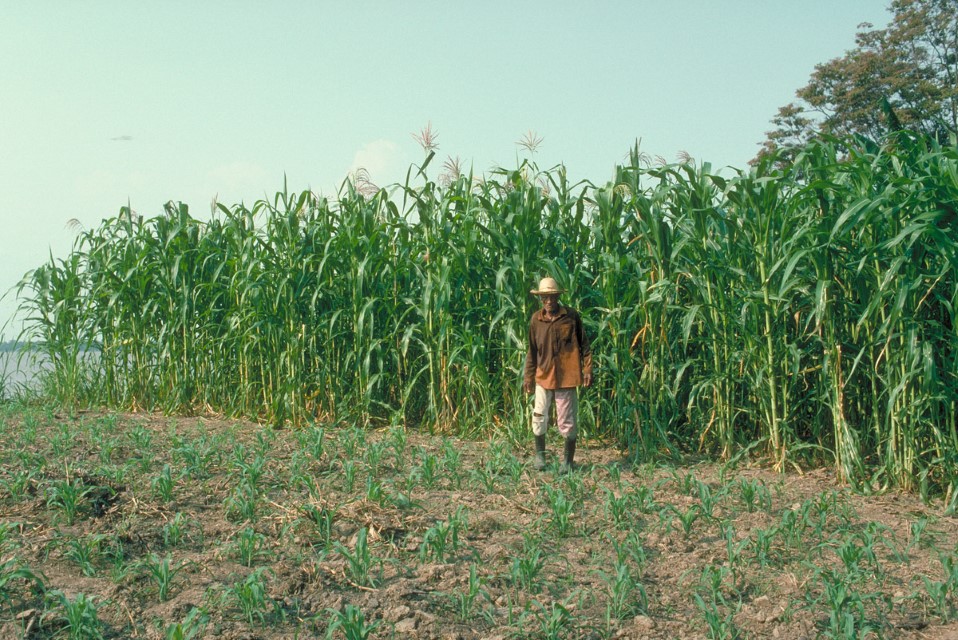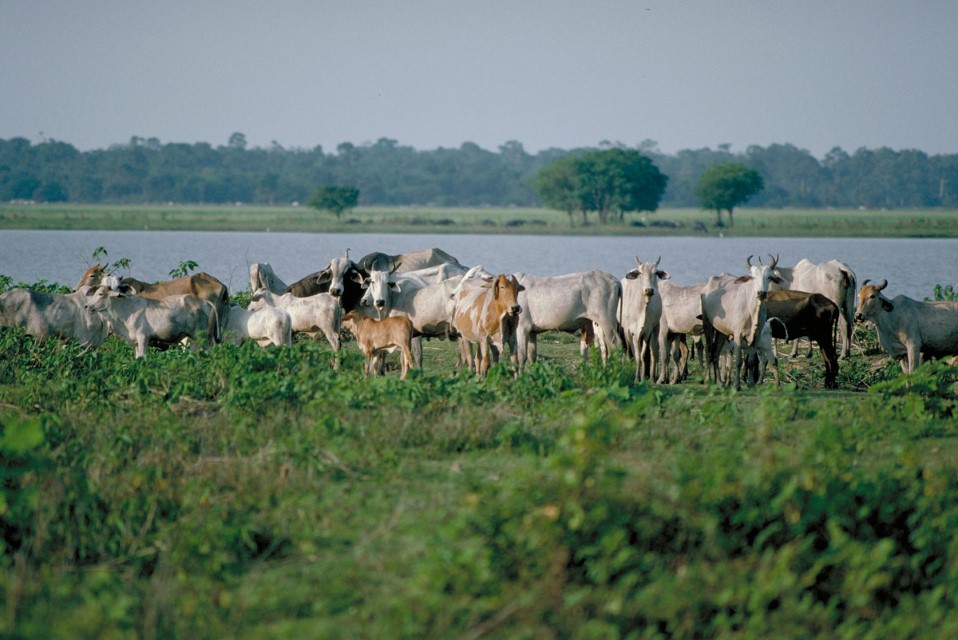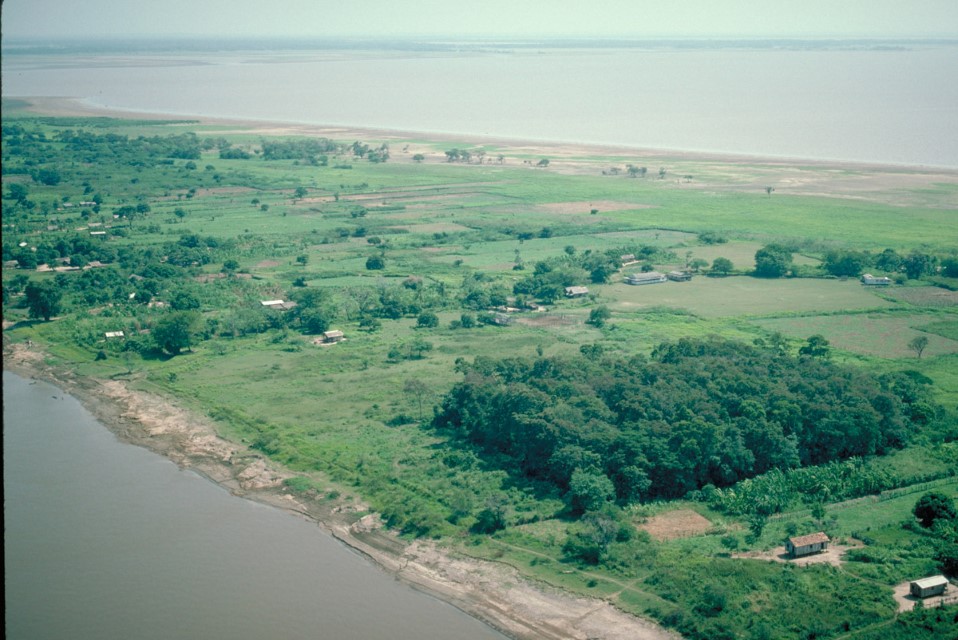The first significant impact on the Amazon River floodplain from human activity after the European Conquest appears to have taken place when steamships were introduced in the 1860s. Large quantities of firewood were needed. The main species cut was mulatto wood (Calycophyllum spruceanum), which was apparently largely depleted by the time steamships were abandoned in the 1930s. Cacao was a relatively important crop on the Amazon River floodplain in the Santarém region at the end of nineteenth century. Although considerable deforestation of levees took place, larger trees were left because cacao is best grown in shade.
The introduction of floodplain jute farming in the 1930s greatly accelerated floodplain deforestation, especially on the high levees near channels. Jute farming was concentrated along the Amazon River from just upriver of the Negro to below Santarém. By the 1970s, when the jute boom was over, nearly all of the tall forest on high levees between the Negro and just downriver of Santarém had been highly modified. When Manaus and other cities began to grow rapidly in the 1960s, central and western floodplain forests were the main sources of timber. By 1980, most of the Amazon River floodplain had been logged. Even the magnificent kapok tree (Ceiba pentrandra) was largely destroyed along most of the main stem. Illegal floodplain logging is a problem even in the Mamirauá Sustainable Development Reserve (at the confluence of the Solimões and Caquetá-Japurá Rivers) and in the mouth region of the Amazon River.
Other than for floodplain logging, which is not sustainable, Amazon River forests appear to have few commercially valuable direct uses. Ecotourism is limited because tourists prefer blackwater or clearwater tributaries, where there are fewer biting insects and the general environment seems cleaner than the muddy Amazon River. The Amazon River’s most valuable sustainable resource—fish—depends on flooded forests and floating meadows. The value of fish is seldom factored into floodplain development plans. Agronomists and private-sector entrepreneurs have touted livestock ranching and rice farming as profitable ways to utilize Amazon River floodplains. Government agricultural institutes publish exaggerated estimates of potential livestock productivity and almost never consider serious environmental impacts. Floodplain rice farming is still largely experimental but could eventually become technologically feasible on a large scale. Large-scale soybean farming has also been suggested as a profitable use of the Amazon River floodplain. The benefits of any floodplain-development scenario should be weighed against its impact on the floodplain’s three main habitats: forests, floating meadows and lakes. Cattle ranchers destroy floodplain forest to increase the production of grass and other herbaceous plant species on which livestock feed. Livestock, in turn, destroy floating meadows and other herbaceous plant communities.
Although there were exaggerated stories about the possibility of a large dam across the Amazon River near Óbidos just upstream of Santarém, such an undertaking is not feasible, and it will probably continue to be the only large river in the world that will remain dam-free, though many of its tributaries will be impounded.
There has been very little mining along the Amazon River. Within the Amazon Main Stem area, which includes the Amazon River and its small tributary basins that abut its floodplains, there is considerable potential. Especially noteworthy are large deposits of potassium salts and bauxite, especially in the eastern Amazon. If mining were to develop in this area, it would have to be in a carefully planned, evaluated, and regulated process, so as not to impact the environmental processes in an irreversible way.
-

Usos e Impactos 1
Farming the Amazon River floodplain during the low water season. Department – Country: Pará – Brazil Main Basin – Sub Basin: Amazon Main Stem – Eastern Amazon Main Stem Photographer: Michael Goulding
-

Usos e Impactos 2
One maize crop can be harvested per year on the Amazon River floodplain. Department – Country: Pará – Brazil Main Basin – Sub Basin: Amazon Main Stem – Eastern Amazon Main Stem Photographer: Michael Goulding
-

Usos e Impactos 3
Zebu cattle are a common feature of the human landscape of the Amazon River floodplain. Department – Country: Pará – Brazil Main Basin – Sub Basin: Amazon Main Stem – Eastern Amazon Main Stem Photographer: Michael Goulding
-

Usos e Impactos 4
Floodplain deforestation along the Amazon River. Department – Country: Pará – Brazil Main Basin – Sub Basin: Amazon Main Stem – Eastern Amazon Main Stem Photographer: Michael Goulding
-

Usos e Impactos 5
Department – Country: Pará – Brazil Main Basin – Sub Basin: Amazon Main Stem – Eastern Amazon Main Stem Photographer: Michael Goulding
